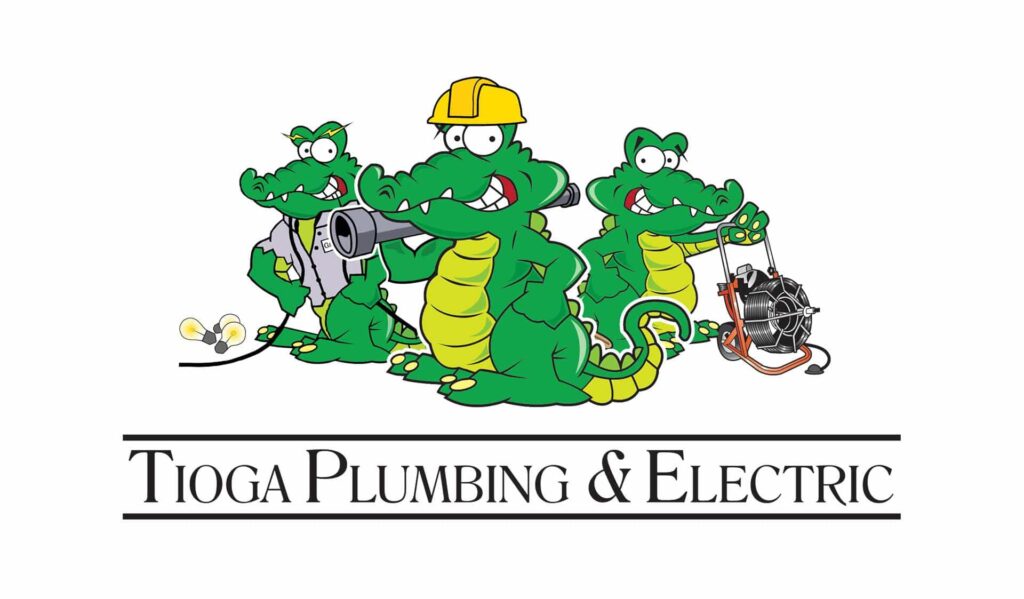Are you familiar with the concept of zero-energy buildings (ZEBs) and why they are increasingly important in our energy-conscious world?
A zero-energy building, also known as a net-zero-energy building, is one that effectively uses no more energy than it produces over the course of a year.
These buildings are designed and constructed to minimize energy consumption and maximize energy generation, typically through renewable sources like solar power.
The idea of buildings that can generate their own energy has been around for several decades.
The roots of zero-energy building designs date back to the 1970s oil crisis, which sparked a growing interest in energy efficiency and renewable energy sources.
Since then, technological advancements and a heightened awareness of environmental issues have propelled the concept into mainstream building strategies.
Zero-energy buildings represent a radical departure from traditional construction practices, offering a sustainable solution to the challenges of climate change and resource depletion.
By achieving a balance between the energy they consume and the energy they produce, ZEBs play a crucial role in our transition toward a more sustainable and energy-independent future.
How Zero-Energy Buildings Work
Zero-energy buildings are engineered to match their energy consumption with an equivalent amount of renewable energy created on-site. This balance is crucial and is achieved through a combination of energy efficiency and the use of renewable energy sources.
The mainstay technologies in ZEBs include solar panels and advanced heating, ventilation, and air conditioning (HVAC) systems.
Solar panels are perhaps the most recognizable symbol of renewable energy. These panels convert sunlight directly into electricity, which can be used immediately, stored, or even fed back into the grid, depending on the building’s design and energy needs.
HVAC innovations in zero-energy buildings often encompass highly efficient systems that use less energy to heat and cool the space.
Examples include geothermal heat pumps or HVAC systems integrated with solar power. These systems are not just about harnessing renewable energy but also about minimizing energy waste through superior design and automation.
Together, these technologies form the backbone of a zero-energy building, enabling it not just to sustain its operations without external energy inputs but also to do so in a clean and efficient manner.

Photo from iStock – Credit: Alberto Masnovo
Benefits of Zero-Energy Buildings
Zero-energy buildings (ZEBs) represent a transformative approach to design and construction that offers multiple benefits across environmental, economic, and security dimensions. These structures are not only a cornerstone for sustainable development but also provide tangible advantages to owners and occupants.
Environmental Impact:
Zero-energy buildings (ZEBs) represent a monumental shift in architectural design, prioritizing environmental health and sustainability. By significantly reducing the reliance on non-renewable energy sources, these buildings help lower greenhouse gas emissions, a critical factor in combating global climate change.
The environmental benefits extend beyond just energy consumption—Zero-energy buildings (ZEBs) are designed using sustainable materials and technologies that promote environmental stewardship and encourage the adoption of green technologies. This proactive approach to construction not only addresses the immediate need to reduce energy consumption but also plays a vital role in promoting long-term sustainability and ecological balance.
Economic Advantages:
Economically, ZEBs offer substantial benefits that make them an appealing investment. The efficiency of their design and systems leads to dramatically lower utility bills. This reduction in ongoing energy expenses can help offset the initial higher costs associated with constructing a ZEB. Over time, as energy prices continue to rise, the savings become even more significant, enhancing the financial viability of investing in zero-energy construction.
Moreover, ZEBs tend to have a higher market value compared to traditional buildings. Their advanced features, energy-efficient systems, and lower operational costs make them highly attractive to a growing segment of eco-conscious buyers. This increased property value is a compelling incentive for developers and homeowners alike, reflecting the growing trend toward sustainability in the real estate market.
Energy Independence and Security:
One of the most significant advantages of ZEBs is their contribution to energy independence and security. By generating their own energy, these buildings are less dependent on local power grids, which can be prone to blackouts or energy shortages. This self-sufficiency ensures a reliable energy supply and reduces vulnerability to external disruptions.
Furthermore, zero-energy buildings shield their owners from the volatility of traditional energy markets. Since these buildings produce their own energy, the cost is predictable and stable, unaffected by the fluctuating prices of utility-supplied energy. This stability provides financial peace of mind and security, making ZEBs not only a sustainable choice but a wise economic decision in uncertain times.
These multifaceted benefits underscore the importance and desirability of zero-energy buildings in today’s rapidly evolving landscape, combining sustainability with economic and energy security to create living and working spaces that are not only environmentally aligned but also economically advantageous and reliable.
Core Components of Zero-Energy Buildings
Zero-energy buildings achieve their remarkable balance of energy consumption and production through several core components that are integral to their design and function. These elements are not just about incorporating renewable energy; they are about creating a synergistic system that maximizes efficiency and sustainability.
Building Envelope and Design Features:
- Insulation and Sealing: A high-performance building envelope is key, featuring advanced insulation techniques and meticulous sealing to prevent energy loss.
- Window Technology: Utilizing double or triple-pane windows that offer high thermal resistance and light transmittance reduces the need for artificial lighting and heating or cooling.
Energy-Efficient Appliances and Systems:
- Smart Appliances: These are designed to consume less power and can often be managed remotely, optimizing their operation times and reducing unnecessary energy use.
- Water-Saving Fixtures: Low-flow toilets, showerheads, and faucets reduce hot water use, thereby saving energy required for water heating.
Integration of Renewable Energy Sources:
- Solar Power Systems: Often the most visible component of ZEBs, these systems are designed to meet all or most of a building’s energy requirements from the sun.
- Wind Turbines: In some cases, especially in wind-rich areas, small-scale wind turbines can also supplement the building’s energy needs.
Together, these components form a comprehensive approach to building design and operation that not only meets the zero-energy standard but also sets a benchmark for future constructions in sustainability and energy efficiency.
Energy Efficiency Technologies in Zero-Energy Buildings
Incorporating advanced energy efficiency technologies is essential for ZEBs to achieve their ambitious performance goals. These technologies are tailored to minimize energy consumption while optimizing comfort and functionality within the space.
LED lighting is a cornerstone technology in ZEBs due to its high energy efficiency. LED bulbs consume up to 90% less power than traditional incandescent bulbs and have a significantly longer lifespan.
This not only reduces the energy used for lighting but also decreases the frequency and costs associated with bulb replacements. Complementing LED lighting, automated lighting systems enhance energy savings by adjusting the lighting based on room occupancy and natural daylight availability, ensuring that energy is not wasted lighting unoccupied spaces or during times when natural light is sufficient.
High-efficiency appliances and electrical fittings are also critical. Appliances that are Energy Star certified are engineered to utilize the minimum amount of energy required to perform their tasks, which is crucial for maintaining low overall energy consumption in ZEBs. Additionally, the inclusion of advanced electrical fittings such as high-efficiency power supplies and programmable devices significantly reduces the standby power consumption that is typical in many electronic devices.
Moreover, the heating, ventilation, and air conditioning (HVAC) systems in ZEBs are often powered by renewable energy sources to further reduce energy use. Geothermal heat pumps are particularly effective, utilizing the constant temperature of the earth to provide heating, cooling, and hot water with greater efficiency than traditional systems.
Solar-assisted HVAC systems integrate solar energy to help in heating and cooling the building, further reducing reliance on non-renewable energy sources and enhancing the building’s overall energy profile.
By effectively harnessing these technologies, ZEBs not only significantly reduce their environmental impact but also set a standard for future constructions aimed at achieving energy neutrality and sustainability.
Role of Electrical Contractors in Zero-Energy Buildings
Electrical contractors are integral to the successful implementation and operation of zero-energy buildings (ZEBs). Their expertise ensures that the building’s electrical systems are designed and installed to optimize energy efficiency and integrate seamlessly with renewable energy technologies.
Design and Installation of Electrical Systems
The design and installation of electrical systems in ZEBs demand a high level of expertise from electrical contractors. They are responsible for creating systems that efficiently distribute power throughout the building while minimizing energy loss. This process involves selecting high-quality, durable components that can withstand the rigors of both traditional and renewable energy inputs. Contractors must ensure that the electrical infrastructure supports the building’s technology—such as energy-efficient lighting, HVAC systems, and appliances—without compromising performance or safety.
Integration with Renewable Energy Sources:
A crucial part of a zero-energy building’s electrical design is its ability to integrate with renewable energy sources. Electrical contractors must have the skills to incorporate systems like solar panels, wind turbines, and even newer technologies such as biogas generators into the building’s energy system.
This involves the installation of inverters that convert DC electricity generated by solar panels into AC electricity usable within the building, along with energy storage systems like batteries that store excess energy for later use.
Smart meters and energy management systems are also crucial for monitoring energy production and consumption, ensuring the building remains energy-neutral or positive throughout the year.
Regulations and Standards Compliance:
Electrical contractors also navigate a complex landscape of regulations and standards that govern ZEBs. These regulations may include local building codes that specify standards for electrical safety and energy efficiency, as well as broader national or international standards aimed at promoting sustainable building practices.
Compliance is critical not only for the functionality and safety of the building’s electrical systems but also for achieving any certifications the building owners may pursue, such as LEED or BREEAM certification.
Electrical contractors’ role in ZEBs is thus multifaceted and vital. They ensure that the electrical systems are not only efficient and safe but also capable of integrating new technologies and complying with evolving standards, thereby contributing significantly to the building’s overall energy goals.
Challenges and Solutions in Electrical Installations for ZEBs
Implementing ZEBs involves unique challenges, particularly in the electrical systems that must support both high efficiency and integration with renewable energy sources. Electrical contractors face several obstacles, but innovative solutions are continually being developed to overcome these hurdles.
Addressing High Initial Costs
One of the primary challenges in constructing zero-energy buildings is the high initial cost, especially regarding the electrical systems equipped with cutting-edge technology.
To mitigate these costs, electrical contractors can leverage various financing options such as green bonds, government subsidies, or special loans designed for energy-efficient projects.
Additionally, the use of modular and prefabricated electrical components can reduce both the installation time and cost, making the projects more financially feasible.
Overcoming Technical Challenges with Innovative Solutions
The technical challenges of integrating various renewable energy sources and ensuring consistent energy availability can be daunting.
Electrical contractors can adopt smart grid technologies, which allow for better energy management and distribution across different sources. These smart-systems help in balancing load and generating real-time data to optimize energy use.
Another solution is the use of advanced energy storage systems that can store excess energy generated during peak production times and distribute it during higher demand or lower production periods.
Furthermore, ongoing training and certification in the latest renewable energy technologies and energy efficiency standards are essential for electrical contractors.
This ensures they remain up-to-date with the latest techniques and technologies, enhancing their ability to tackle complex installations and maintenance issues in zero-energy buildings effectively.
By addressing these challenges with innovative and practical solutions, electrical contractors can significantly contribute to the success and efficiency of ZEBs, ensuring they meet their sustainability goals while maintaining financial viability and technical reliability.

Tioga Plumbing & Electric: Powering Your Zero-Energy Vision
At Tioga Plumbing & Electric, we are a leading provider of top-notch electrical services tailored for zero-energy buildings. Our deep understanding of the complexities involved in ZEB projects, combined with our extensive experience and proven track record, positions us as a leader in this innovative field.
Why Partner with Tioga for Your Sustainable Building Projects?
Choosing Tioga Plumbing & Electric for your zero-energy building project means partnering with a team that prioritizes efficiency, sustainability, and customer satisfaction. We are skilled at balancing advanced technology integration with practical application, ensuring that all electrical installations adhere to the highest standards of quality and compliance.
Custom Solutions: At Tioga, we recognize that each zero-energy building project is unique. We provide customized solutions tailored to the specific needs of your project, whether it involves retrofitting an existing structure or developing a new construction from the ground up.
Comprehensive Service: From initial design and consultation to installation and ongoing maintenance, Tioga offers comprehensive services to cover all aspects of electrical systems in zero-energy buildings. Our holistic approach ensures continuity and consistency, which are crucial for achieving and maintaining zero-energy status.
Certified Expertise: Our team holds certifications in the latest energy-efficient technologies and sustainable building practices. This equips us to handle the demands of any ZEB project, delivering results that meet both regulatory standards and exceed client expectations.
At Tioga Plumbing & Electric, our commitment to excellence and sustainability makes us the ideal choice for anyone looking to implement effective and reliable electrical solutions in their zero-energy buildings.
Ready to embark on your zero-energy journey? Contact Tioga Plumbing & Electric today, and let’s build a sustainable future together.
FAQs About Zero-Energy Buildings
What exactly is a zero-energy building?
A zero-energy building (ZEB) is meticulously designed to balance its energy consumption with an equal amount of renewable energy produced on-site over a year. This innovative approach not only reduces environmental impact but also aligns with global sustainability goals.
Are zero-energy buildings more expensive to build?
Initially, ZEBs may incur higher costs due to the advanced technologies and durable materials required. However, these initial investments are generally offset by long-term savings on energy expenses. Additionally, homeowners and businesses may benefit from various government incentives and rebates that encourage the adoption of sustainable practices.
Can existing buildings be converted into zero-energy buildings?
Absolutely. Many existing structures can be retrofitted to meet zero-energy standards. This transformation typically involves enhancing the building’s insulation, installing energy-efficient windows and lighting, upgrading HVAC systems, and integrating renewable energy sources like solar panels or small wind turbines.
How do zero-energy buildings impact the environment?
ZEBs play a crucial role in reducing carbon footprints. By minimizing reliance on fossil fuels and maximizing the use of renewable energy, these buildings help mitigate the effects of climate change and promote environmental sustainability. They also contribute to healthier living environments by using non-toxic, sustainable materials and improving indoor air quality.
What are the key challenges in developing zero-energy buildings?
Developing ZEBs presents several challenges including the high initial cost of installation and the need for specialized knowledge in sustainable construction practices. Additionally, integrating different renewable energy systems to work cohesively can be complex. However, the evolving field of green technology and increasing expertise among contractors are rapidly overcoming these obstacles, making ZEBs more accessible and efficient.
Curious about how you can achieve zero-energy status for your home or business? Reach out to Tioga Plumbing & Electric for customized solutions and expert guidance. Together, we can build a sustainable and energy-efficient future.
Taking a bite out of Your Plumbing & Electrical needs
Other Electrical & Plumbing Services

Taking a bite out ofYour Plumbing & Electrical needs
We make fixing your home easier than ever. Whether it’s a leaky pipe, faulty wiring, or an urgent repair, our experts deliver fast, reliable solutions you can count on.
















